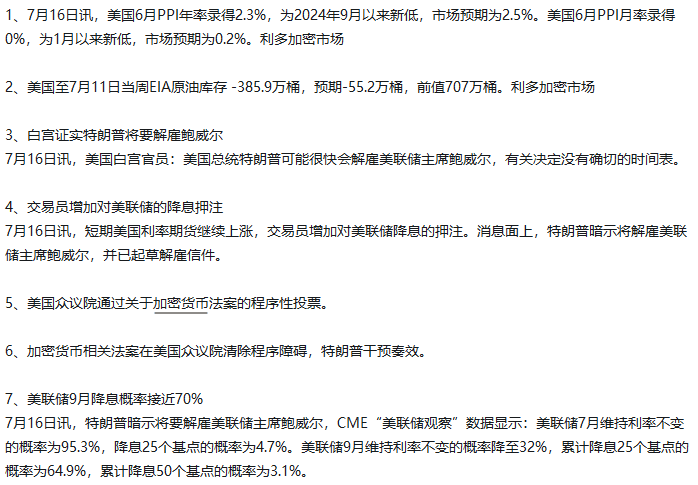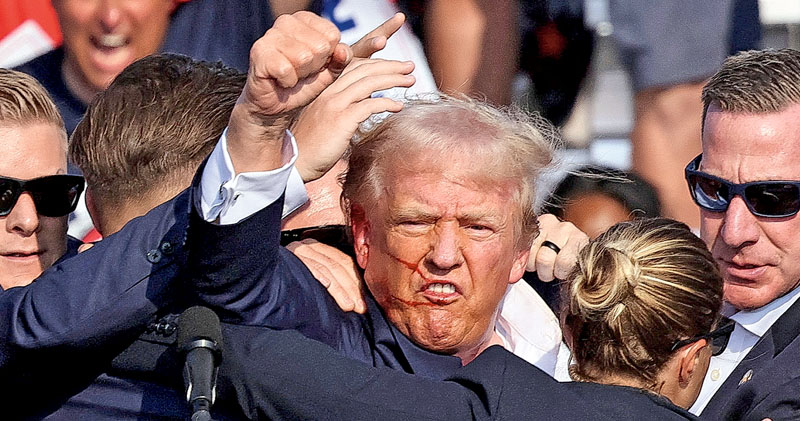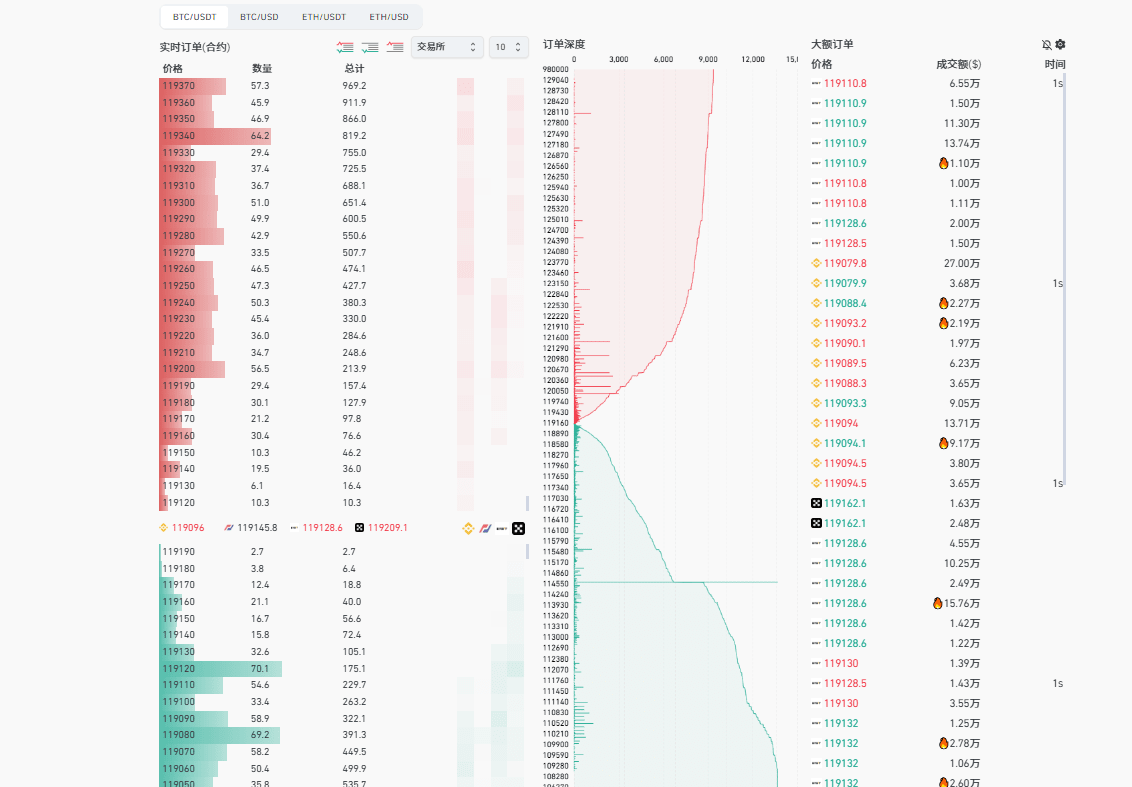Dynamic updates on July 16, Eastern Time, Wednesday:
President Trump announced at the White House plans to send tariff adjustment notification letters to over 150 countries worldwide, which he termed a 'major trade agreement.' At the time of this announcement, the U.S. stock market was still affected by the previous rumors of 'Trump possibly firing Federal Reserve Chairman Powell,' putting pressure on the market. The S&P 500 index fell more than 0.1%, the Nasdaq index fell nearly 0.2%, and the Dow Jones barely maintained stability, while the Philadelphia Semiconductor Index saw a drop of more than 1.7%. However, market sentiment subsequently eased, and during the midday session, major indexes turned to rise, with the Philadelphia Semiconductor Index also significantly narrowing its losses.

Closing situation:
Finally, all three major stock indexes rose slightly: the S&P 500 index rose more than 0.3%, the Nasdaq index rose nearly 0.3%, and the Dow Jones Industrial Average rose more than 0.5%. The Philadelphia Semiconductor Index fell slightly by nearly 0.4%.
In-depth analysis: Trump's tariff policy tears apart global trade, inflation pressure surges.
President Trump’s plan to set a single tariff standard for more than 150 countries is akin to dropping a heavy bomb on an already fragile global trade system. It is reported that the tax rate for smaller economies may be set at 10% or 15%, while more stringent measures may be introduced as of August 1.
This is by no means just empty talk. Looking back at the market's immediate reaction when the initial tariff plan was announced in March this year, Bitcoin plummeted 4.6% within an hour, while Ethereum fell 5.7% simultaneously, leading to massive liquidations of leveraged trades. On July 14, when Trump suddenly announced a 30% tariff on Mexico and the EU, Bitcoin led the decline once again. The high uncertainty and volatility of such policies (threat-retraction-delay) have placed global enterprises in a difficult position.
Pressure on people's livelihoods, soaring costs:
Severe data reveals the burden on the general public: the Tax Policy Center predicts that after August, tariffs on women's clothing will reach as high as 48%, books 40%, and baked goods 22%. The Yale Budget Lab's estimates are even more shocking— the actual average tariff rate borne by consumers has reached 18%, marking the highest level since 1934.
'The rising import costs are impacting every link in the supply chain,' warns Kronos Research CEO, 'companies either absorb the costs themselves, compressing profits; or pass the costs onto consumers.' In this trade war without gunpowder, low- to middle-income families are the first to bear the brunt, enduring the most direct impact.

Bitcoin: Transforming in the storm, hitting historical highs against the trend.
While traditional financial markets struggle under the shadow of tariffs, Bitcoin has staged a remarkable comeback. This Monday, after Trump announced adjustments to certain tariff rates, major U.S. stock indexes generally fell, but Bitcoin strongly broke through the $118,000 mark, setting a new historical record.
This phenomenon signifies a profound transformation in Bitcoin's role—it is gradually evolving from a 'high-risk speculative asset' to an important 'macro hedging tool.' Kronos Research CEO accurately points out: 'In the context of tariffs pushing up inflation and exacerbating market volatility, investors are increasingly valuing Bitcoin's inherent scarcity and decentralization characteristics.'
On-chain data provides strong evidence for this transformation: despite the market turmoil triggered by Trump's tariff policy, the U.S. spot Bitcoin ETF recorded net inflows for seven consecutive days, totaling as high as $1.03 billion. Among them, BlackRock's IBIT fund has set an astonishing record of net inflows for 30 consecutive days. The share of institutional investors in the Bitcoin market has surged from about 10% in 2020 to over 40% in 2025. When the Abu Dhabi sovereign wealth fund heavily holds Bitcoin ETFs and the Swiss central bank indirectly allocates Bitcoin assets through MicroStrategy, the market landscape has been profoundly reshaped.
Bitcoin's anti-tariff logic: Challenging dollar hegemony and inflation expectations.
Bitcoin's pressure-resistant logic is rooted in profound global economic realities. BlackRock CEO Larry Fink candidly stated in his annual letter to investors: Bitcoin is challenging the dollar's status as the world's primary reserve currency. Notable trader Arthur Hayes's analysis is even sharper: facing massive government debt and political pressure, the Federal Reserve may be forced to restart quantitative easing, effectively financing the government and recreating the high inflation scenario of the 1970s, which could serve as a powerful catalyst for Bitcoin's price surge.
More importantly, Trump's tariff policy is also accelerating the erosion of the dollar's international dominance. For example, the clause in the China-U.S. trade truce agreement regarding 'local currency settlement pilots' is quietly undermining the dollar's foundation as the global trade settlement currency. Historical experience is worth referencing: during the early stage of the last trade war from 2018 to 2020, Bitcoin experienced a pullback but ultimately broke through the $20,000 mark.

Supply-demand imbalance and technical resonance, positive outlook ahead.
Data from Bitwise reveals a key structural problem: by 2025, the purchasing demand for Bitcoin from U.S. companies alone exceeds the network's new supply by three times. As the Bitcoin 'halving' effect continues to manifest, the daily new production of Bitcoin has dropped from 900 coins to about 450 coins, while the theoretical daily demand from just BlackRock's IBIT fund could reach 800 coins. This severe structural shortage, compounded by the halving cycle, provides strong upward support for prices.
Technical analysis also sends positive signals. Bitcoin successfully broke through the critical resistance level of $121,500, significantly boosting market confidence. Notable analyst Web3Niels pointed out that after effectively overcoming the resistance range of $119,000 to $120,000, the $135,000 to $140,000 area has become the next target worth watching.
The trends in the options market also confirm bullish expectations. On the major crypto derivatives platform Deribit, the open interest for Bitcoin call options with a strike price of $100,000 is approaching $1.2 billion, while a large number of bullish contracts are clustered in the range of $95,000 to $120,000, indicating that traders are betting on a significant upward price movement.
Mainstream institutions on Wall Street continue to raise target prices. Standard Chartered Bank analyst Geoffrey Kendrick admitted that the previous 'second-quarter target of $120,000 was too conservative' and has now set the annual target at $200,000. Even more notably, individuals related to the Trump family recently predicted at an industry summit that Bitcoin could reach $170,000 by the end of 2026.
Short-term volatility is inevitable, but key support areas provide a buffer for possible pullbacks, and long-term investors view this as a good opportunity to position themselves.
Blockchain: The corporate 'breakwater' in the trade turmoil.
In the current climate of uncertainty in global trade, the value of blockchain technology is becoming increasingly prominent. Kronos Research's CEO emphasizes: 'Blockchain, with its transparency and unalterable on-chain record characteristics, injects unprecedented resilience into the supply chain.' When tariff policies frequently change, the real-time, verifiable product origin and logistics tracking capabilities provided by blockchain can effectively help companies avoid compliance risks and hefty fines, becoming a practical tool for companies to cope with volatility.
Hong Kong's strategic layout in the stablecoin field also reflects the region's proactive approach to financial risk. According to HashKey's chief analyst Jeffrey Ding, Hong Kong is cautiously issuing the first batch of stablecoin licenses, focusing on promoting their application in cross-border payment scenarios to help emerging market countries manage financial volatility risks. When traditional cross-border payment channels are blocked, stablecoins are becoming an important alternative.
It is noteworthy that institutions under the Trump family have also launched a dollar stablecoin USD1, intending to carve a niche in the USDT and USDC dominated market. Despite potential conflicts of interest, the stablecoin regulatory framework established by the U.S. (Clear Act) undoubtedly paves the way for the future development of a digital dollar.
Do you think big brother BTC can break through $200,000 this year? Leave your opinions in the comments!
$ETH
$BTC
Blindly going solo will never bring opportunities. Why not follow the leader? I will guide you to explore tenfold potential coins! Top-tier resources!


